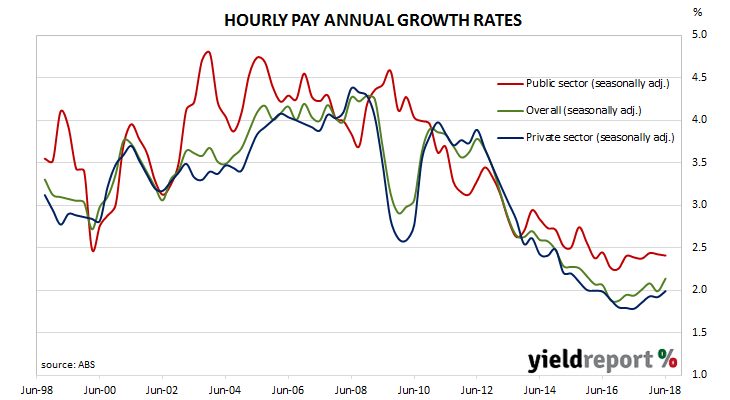Each quarter the Australian Bureau of Statistics (ABS) surveys around 3000 enterprises regarding a sample of jobs in each workplace to measure changes in the price of labour across 18000 jobs. The results are used to construct a wage price index (WPI) in a manner similar to the construction of the Consumer Price Index (CPI). Changes in the WPI over time provide a measure of changes in wages and salaries independently of changes in the quality or quantity of work performed.
According to the latest wage price index (WPI) figures published by the ABS, hourly wages grew by 0.6% in the June quarter, up from +0.5% recorded in the March quarter but in line with current expectations. The year-on-year growth rate edged up from March’s revised growth rate of 2.0% to 2.1%, which makes this quarter the fourth quarter in which the annual rate has not been below 2.0%. However, it is still barely just above the lowest growth rate since the beginning of the series in 1999.
ANZ senior economist Felicity Emmett said a fall in the unemployment rate was required before wages would grow at a faster pace. “Spare capacity in the labour market is declining, but further inroads into unemployment and underemployment are necessary preconditions for a more meaningful uplift in wages.”
Local bond yields finished the day a little lower despite higher US yields in overnight markets. Local 3-year and 10-year bond yields slipped by 1bp to 2.03% and 2.58% respectively while the local currency was unmoved at about 72.40 US cents.

